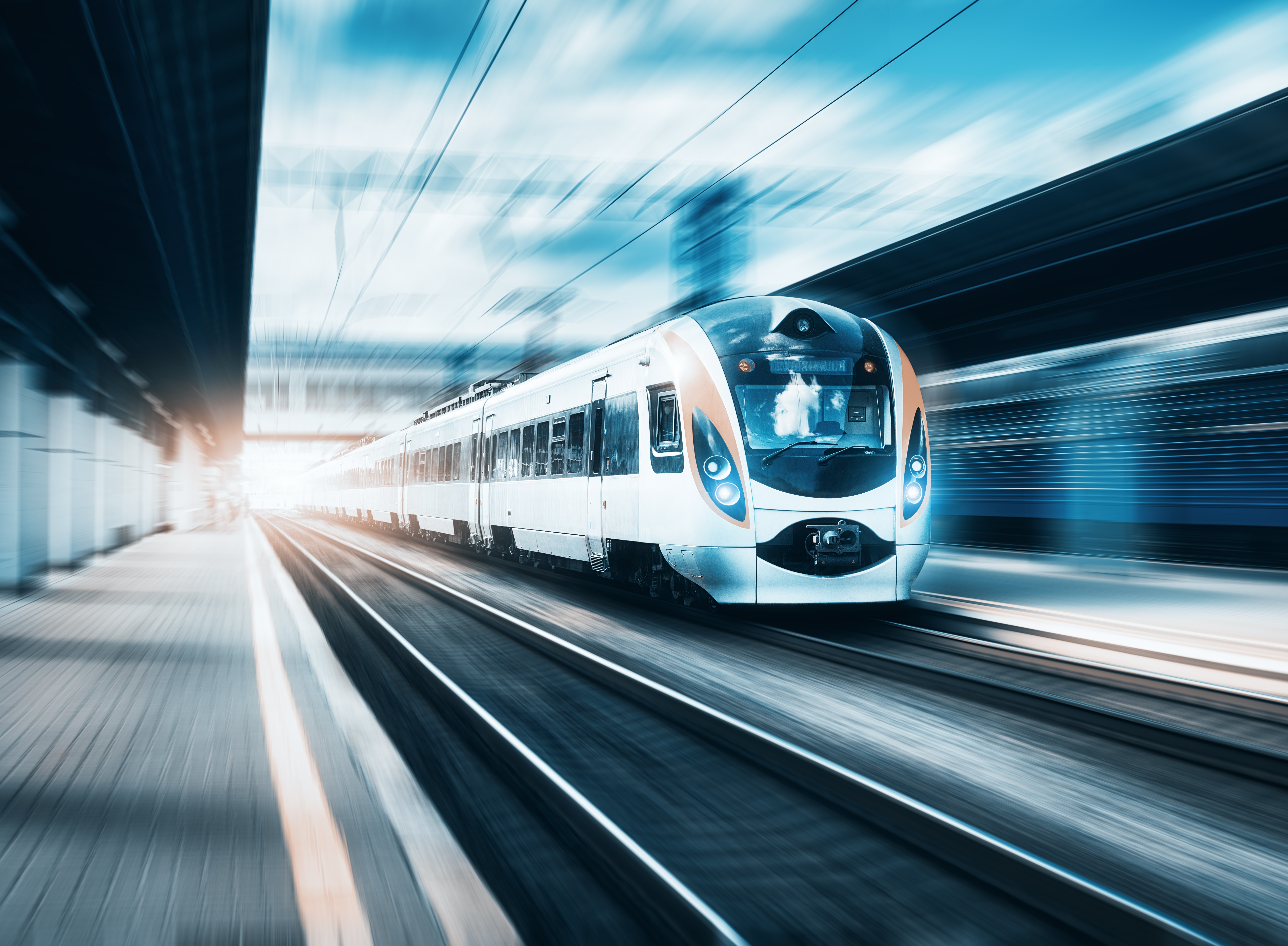
Railway transportation is highly efficient (6 times better) with low emissions (6 times lower CO2, NOx and PM) compared to road and air travel, yet contributes to only 10% of the global passenger and freight traffic (source: IEA report). This is rapidly changing with development of high speed rail networks and electrification in India and China. Moreover, urbanization and smart cities require metros for mass mobility with clockwork schedules and point to point connectivity. Rapid acceleration-deceleration profile triggers a unique degradation mode referred to as 'white etching layer (WEL)', a potential risk to track integrity. Spallation of such layers leads to formation of squat which increases both noise levels and vertical impact forces affecting ride quality. (Source : Martensite formation in Mumbai EMU wheels during monsoon in India, 4th Railway Friction Conference). High speeds in long distance trains and heavier freight axle loads tend to accelerate other failure modes at the rail-wheel interface (Figure 1a, 1b). Reports indicate millions of Euros in UK and Netherlands spent annually for track maintenance due to squats and other defects.
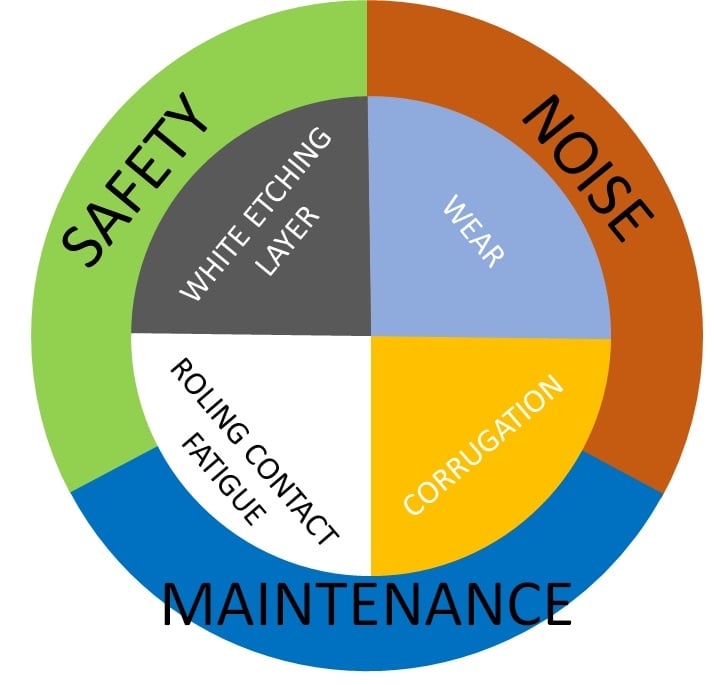
Figure 1 A. Different failure modes at rail wheel interface that affect safety, maintenance and ride quality
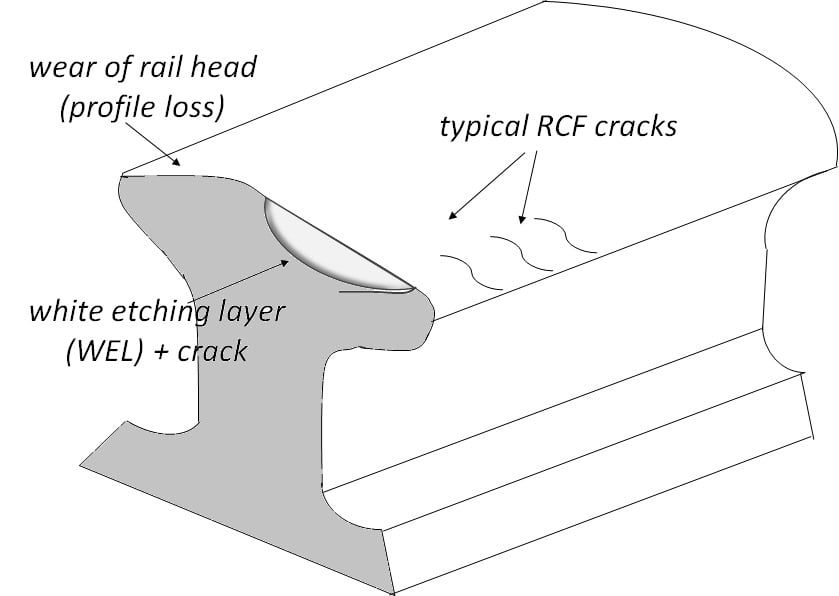
Figure 1b Location of different failure modes on a rail head (excessive wear, multiple RCF cracks and WEL)
Historically three important strategies have been deployed to address failures
(1) Advanced materials - high strength and tough pearlitic and bainitic steels, laser cladding for higher wear resistance and rolling contact fatigue life (RCF).
(B) Wayside friction modifiers - rail lubrication (top and gage) to control friction at the rail wheel interface to reduce subsurface stresses, intensity of wear and RCF. A typical COF < 0.2 is required for flange lubrication and COF between 0.3 to 0.4 for rail head lubrication.
(C) Preventive maintenance - rail grinding to remove surface cracks (i.e., controlled wear) and restoring rail profile to reduce stress hotspots and extend RCF life. However, unscheduled and repeated maintenance disrupts urban mobility (e.g., Mumbai Metro rides 7 millions passengers on a daily basis)
White etching layers tend to be harder and less tough compared to the base microstructure thereby resulting in premature failures and reduced life compared to conventional RCF cracks. How do these failures originate ?
The typical operating conditions for rail wheel contact is shown in Table 2 and shows different rolling-sliding conditions for top of rail and wheel flange.
Table 2 - Typical pressure and sliding conditions at rail-wheel contact
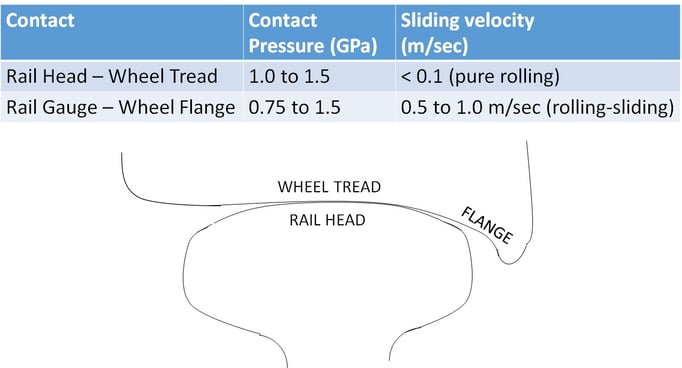
White etching layers are associated with a zone of transformed nanostructure having higher hardness, reduced ductility and deleterious residual stresses. Cracks can easily propagate within WEL or WEL base material interface. Formation of WEL's is an active area of research with opposing theories as summarized in Table 3.
Table 3 - Mechanical and thermal driven formation of WEL

Ducom twin disc (roller on roller RoR) offers a realistic lab platform that can reproduce the characteristic conditions at the rail-wheel interface (Table 4). Contact pressures upto 4 GPa and slip ratios of 100% can accelerate formation of 'mechanically-driven WEL'. A unique heating facility (temperature of 700 deg C) can augment formation of 'thermally-driven WEL' (see Figure 5)
Table 4 - Contact pressure, %slip and temperature capabilities of Ducom twin disc (RoR)
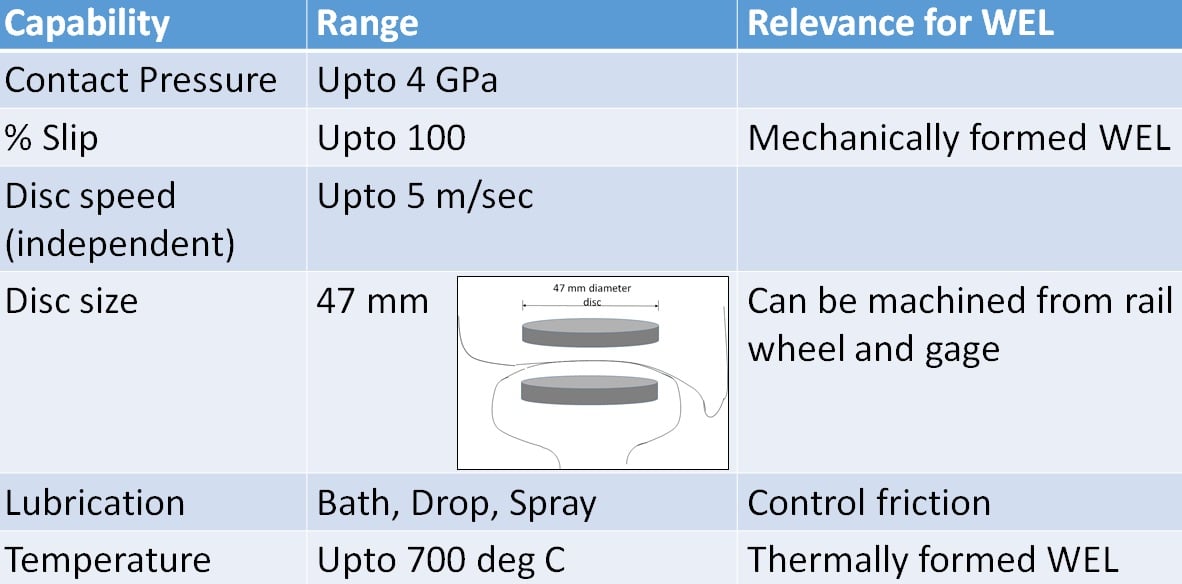
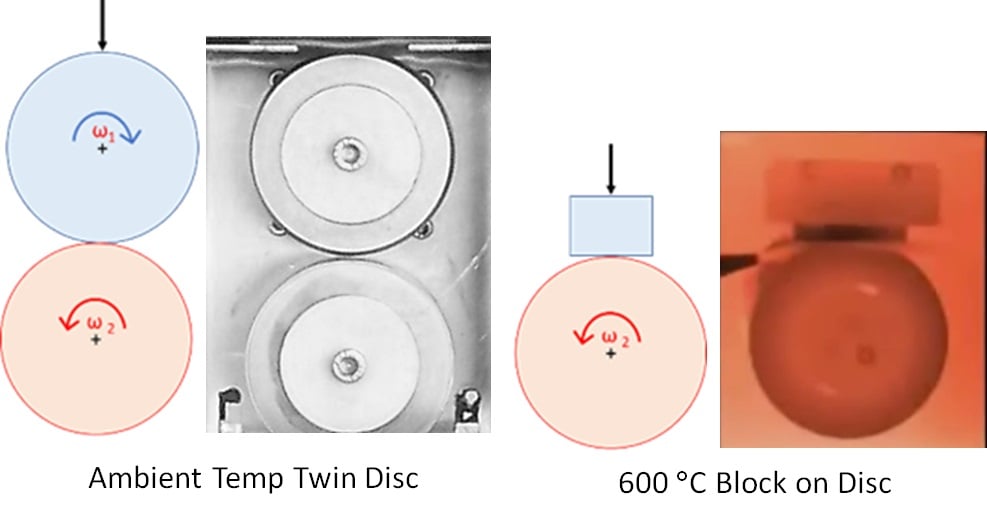
Figure 5 - Ambient temperature twin disc configuration and 600 deg C block on disc configuration of Ducom twin disc (RoR)
Understanding of materials and the conditions which trigger formation of WEL, a critical field issue, would help develop a better solution.
Ducom twin disc (RoR) can simulate the contact pressure, aggressive slips ratios during rolling and elevated temperatures believed to trigger formation of white etching layers in rail heads and wheels.
Contact us for more information. Our experts are just a click away.
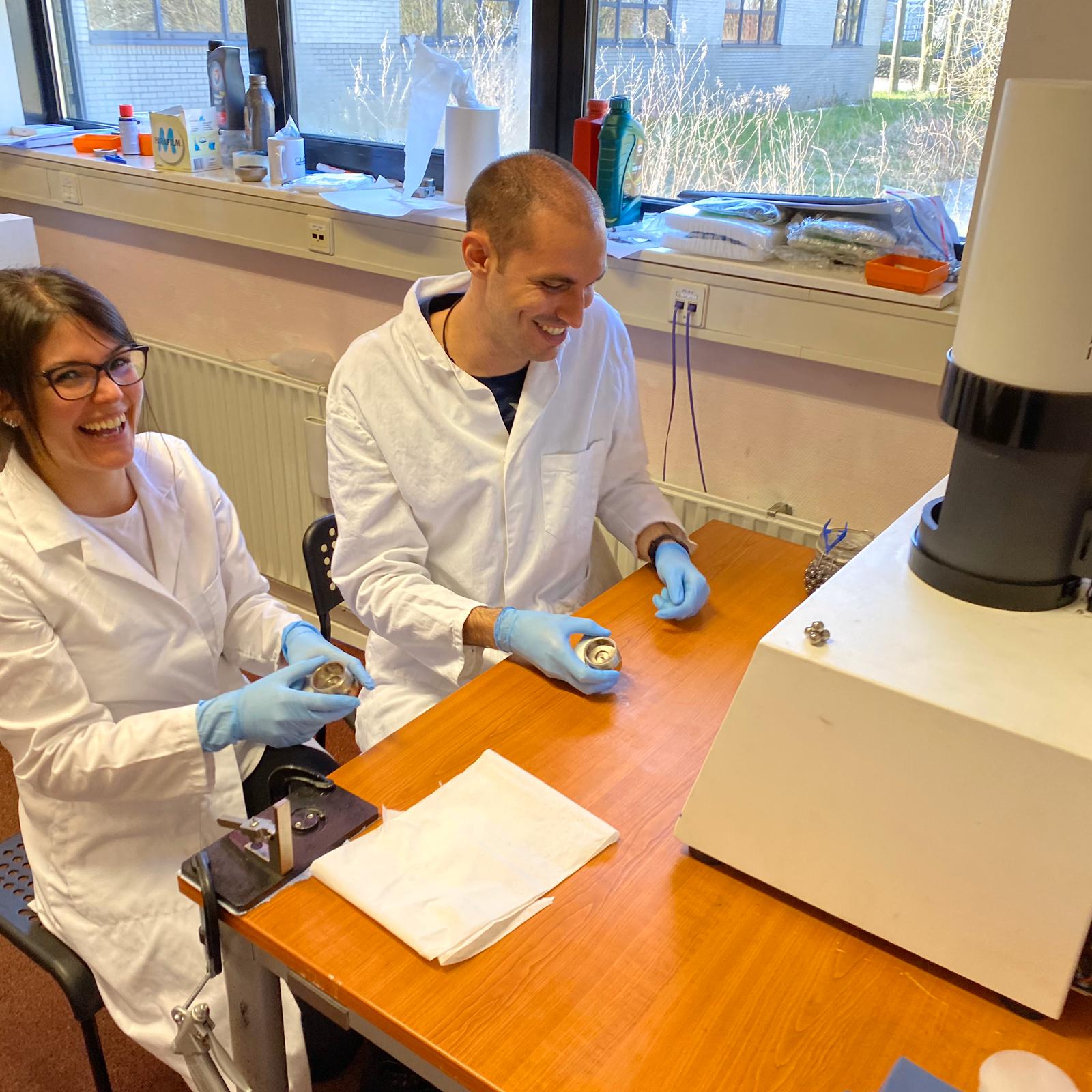
These Stories on Twin Disk
USA: +1 (847) 737-1590
India: +91 (80) 4080-5555
Netherlands: +31 (85) 065 74 10